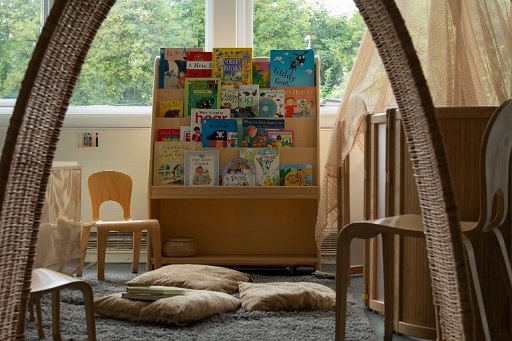Your role in influencing policies and practice in your setting
All ELC practitioners have a role to play in creating inclusive policies that can shape inclusive practice. As already discussed during the previous weeks, your skills and qualities can make a difference to children’s experience in their setting. Positive interactions and warm relationships in your day-to-day interactions can help them to feel that they belong in the setting. A warm ethos in an ELC setting will enable children to flourish and meet their potential.
As well as contributing to promoting a policy of developing positive relationships with children and families, you may be able to lead other changes such as the physical environment in your setting. How a room is laid out can be critical to how much a child can access activities and be included.
It is often the small details that matter more than you might think. Making sure that families and other professionals feel welcome and included makes an important contribution to how you work with others. As discussed in Week 4, simply ensuring that everyone is offered a cup of tea might change the atmosphere and even the outcome of the meeting.
As much as we might want to, it is hard to change everything at once. It can help to spend time looking and thinking about an area of practice or the layout of a room and identify what the gaps are.
Take a look at Figure 6.9.

This might look like an inviting space: it has different textures, natural materials and natural light, and there is a selection of books to look at. But how might it look to a child using a wheelchair with the aid of an adult? Is there only one way in? Is there enough room to be side by side with other children?
You need to consider the preferences and needs of the children you are working with. But you also need to think about being flexible and open to change in response to how children use the space.
Perhaps there are too many invitations to climb in this layout? Are there children in your care who are learning how to take care of furniture and resources who might find it hard to resist climbing? Instead of spending time talking to them about their choices, perhaps you could arrange the area differently to make climbing less appealing. You would need to make sure climbing opportunities were available elsewhere.
Activity 6.4 Consulting with children
Whatever changes you make, you need to ensure that (where appropriate) you do it in consultation with children. For instance, when you assess how inclusive the environment is, you might decide that a layout isn’t working, but perhaps you’ve not noticed how the children use the space. There may be a favourite corner or a secret den that has passed you by. Take time to observe and then talk your ideas through with children.
It might be necessary to make a change. You can still discuss it with children, explaining why something needs to change, and you can suggest that you all see whether it works. By keeping conversations going about your environment, you are encouraging children to consider the space to be theirs. If they feel ownership and control over the environment they will be encouraged to take care of it.
This approach is supported by the National Health and Social Care Standards [Tip: hold Ctrl and click a link to open it in a new tab. (Hide tip)] . Which of the Standards do you think are relevant here? Read the detailed standards (pp. 4–15) and note down which ones are being met by taking a consultative approach.
Feedback
Perhaps you considered these points?
Be included
- 1.9 I am recognised as an expert in my own experiences, needs and wishes.
- 4.6 I can be meaningfully involved in how the organisations that support and care for me work and develop.
Dignity and respect
- 2.3 I am supported to understand and uphold my rights.
In this case this includes Article 12: I have the right to be listened to and taken seriously. (You can read more rights here: https://www.cypcs.org.uk/ rights/ uncrcarticles)
Wellbeing
- 5.22 I experience an environment that is well looked after with clean, tidy and well-maintained premises, furnishings and equipment.
At the end of this section the extension activity includes resources that you might find helpful if you are considering how to assess or audit your environment.
6.3 Policies in your setting
